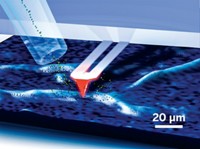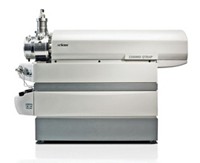Advertisement
Grab your lab coat. Let's get started
Welcome!
Welcome!
Create an account below to get 6 C&EN articles per month, receive newsletters and more - all free.
It seems this is your first time logging in online. Please enter the following information to continue.
As an ACS member you automatically get access to this site. All we need is few more details to create your reading experience.
Not you? Sign in with a different account.
Not you? Sign in with a different account.
ERROR 1
ERROR 1
ERROR 2
ERROR 2
ERROR 2
ERROR 2
ERROR 2
Password and Confirm password must match.
If you have an ACS member number, please enter it here so we can link this account to your membership. (optional)
ERROR 2
ACS values your privacy. By submitting your information, you are gaining access to C&EN and subscribing to our weekly newsletter. We use the information you provide to make your reading experience better, and we will never sell your data to third party members.
Analytical Chemistry
PIES In The Sky
A technique from plasma physics is being developed as a mini GC detector for space applications
by Celia Henry Arnaud
March 29, 2006

Scientists at NASA and Polytechnic University in Brooklyn, N.Y., are borrowing a technique from plasma physics and developing it for use as a gas chromatography (GC) detector on planetary missions.
Daniel R. Kojiro of NASA Ames Research Center in Moffett Field, Calif.; Valery A. Sheverev of Polytechnic University; and coworkers are developing Penning ionization electron spectroscopy (PIES) as a detection method for GC. Kojiro presented the work twice at the ACS meeting in Atlanta: as a poster at Sci-Mix on March 27 and in a session sponsored by the Division of Analytical Chemistry on March 28. NASA is interested in PIES, Kojiro said, because it could provide a small instrument that gives definitive analysis of complex mixtures.
In PIES, metastable helium, which has 19.8 eV of energy, can ionize analytes that have ionization potentials less than that. The identity of analytes can be determined from their ionization potentials by measuring the energy of the electrons that are ejected. Unlike many other detection methods, PIES provides definitive, rather than inferred, identification.
Before PIES can be used as a GC detector, however, an instrument will need to be developed that can be used at atmospheric pressure. PIES is usually done under vacuum because the electrons have to be analyzed before they collide with something and lose energy. "For the PIES cell to work at higher pressure, you have to make it very tiny," Kojiro said.
Sheverev's company, Lenterra, located in West Orange, N.J., is developing an instrument that can be used at atmospheric pressure. The company has done the theoretical modeling for new PIES cells and is working to demonstrate that they work in the lab. The research is funded through a Phase II Small Business Innovative Research (SBIR) grant from NASA.




Join the conversation
Contact the reporter
Submit a Letter to the Editor for publication
Engage with us on Twitter